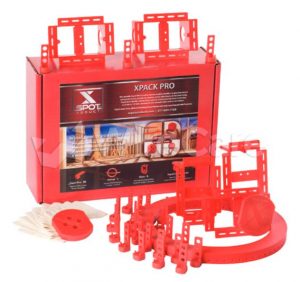
6.12.19 – SSI – BOB DOLPH, SSI Contributor
As consumers attempt to coordinate technologies from companies like Google, Amazon and Apple, they are becoming frustrated with integrating their whole A/V system.
There are many challenges and many opportunities for today’s security integrators, dealers and technicians where it comes to residential audiovisual (A/V) systems. This month we’ll take a quick journey into ways to make these endeavors both enjoyable and profitable.
In the past most of us would not even be discussing resi A/V unless it was $5,000+ home theater. Now, thanks to the world of GAFA (Google, Amazon, Facebook, Apple) everyone is getting a good taste of how A/V systems can enhance home lifestyles. Customers are now demanding A/V technologies that they can easily control.
As they add and try to coordinate GAFA technologies they are becoming frustrated at integrating their whole A/V system. This is where we can offer professional solutions such as those from companies like Control4. However, to do this the technician needs to keep up to date on the latest applications.
“By educating themselves on the capabilities of smart home integration with residential A/V products, security technicians open a new market of opportunity,” says Control4 Sr. Director, Product Marketing Brad Hintze.
Because the residential A/V market now consumes so many new and exciting products and technologies, one of the best ways to familiarize oneself is contacting distributors and organizations that specialize in A/V products.
Recently Dennis Holzer, executive director of distributor network PowerHouse Alliance, commented, “It’s common for security technicians to have technical challenges integrating A/V products. Not every automation platform has drivers for every single product, because the speed at which vendors are entering the space with new capabilities is constant.”
A valuable resource is an organization known as CEDIA (Custom Electronic Design & Installation Association). You may want to check out their training and certification courses, and visit their tradeshows (this year’s CEDIA Expo is Sept. 10-14 in Denver) to get the latest from A/V vendors.
Additionally, specialty A/V suppliers such as Vanco Int’l, which manufactures a variety of products under multiple brand names, can offer support for transitioning security dealers and technicians.
Recently I posed some questions to Brandon White, Vanco’s director of new product development:
What are some of the top technical challenges with residential A/V products and systems?
One of the most common is remaining diversified enough to cover multiple aspects and scopes of jobs. As technology revolutionizes, often without notice, it is important that technicians educate themselves immediately to ensure they are confident recommending and installing the latest products and technologies, while adding their own element of customization to each job.
On the same note, we have noticed that more and more installations are moving to a software-based approach, rather than the more traditional hardware installations of the past, especially as more devices are added to the home network. This means that technicians need to have a deep understanding of how to build robust networks and to expand on existing networks in customer homes.
What are some key planning, installing, operational tips or strategies?
I’ve been preaching the same installer checklist for roughly eight years. The following procedures will benefit and advance security dealers who are looking to enter, or who are currently dabbling in the residential A/V market.
- Before you begin an install, choose your cabling carefully, and always remember that quality counts. It is important to be mindful of where cables are running, and how long they are.
- Be sure to run more than one cable to account for variables outside of your control, and add about 10% maximum to each cable length to account for wall plates and patch panels.
- Terminate the cabling to the recommendations of the manufacturer and test, test, test! You should always bench test products before going out on a job, or if the products are new to you.
- After a prewire, schedule a preinstallation visit to ensure all cabling is still intact. During that time, be sure to test the signal generator and monitor it as this can identify any underlying issues early, saving hours of troubleshooting in the long run.
- You should think outside the box but try to keep the design simple and work within the product specifications.
- It’s important to be in control of your system — never rely on “auto” settings.
- And lastly, keep in mind that you are installing for now, but planning for tomorrow, so ask your customer the right questions up front to ensure that what’s behind the walls will serve their future needs.

Tool Tip
Planning and prewiring of residential A/V systems is critical. Accurately locating preinstalled cabling is paramount. This is why I have selected the Xspot locator system from parent company Prime Industrial Design. With a 10-year success history it will save any tech time and money.
Xspot originated from company founder and low-voltage integrator Mark Sipe’s cabling issues during a 14,000-square-foot residence’s technology prewire.
